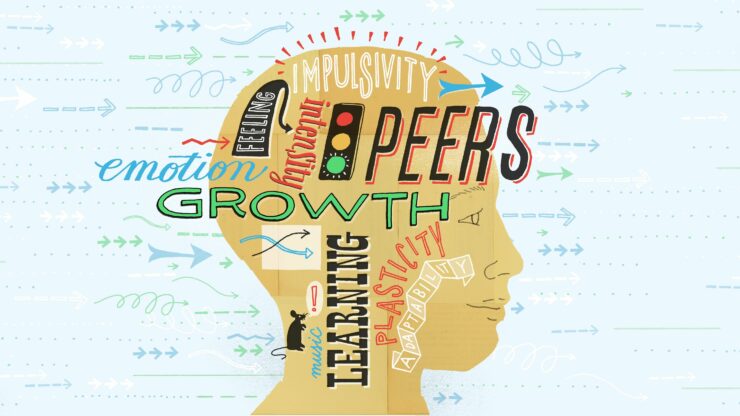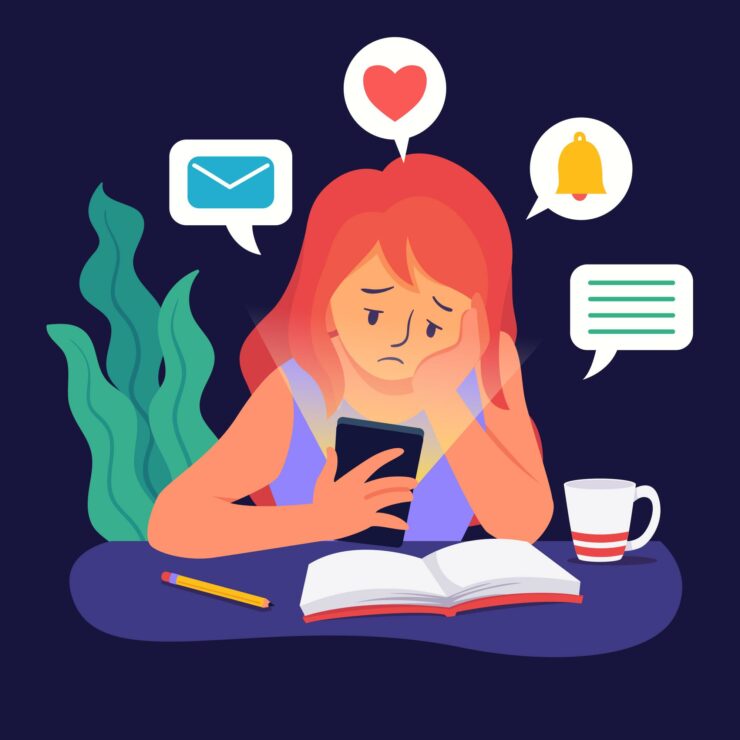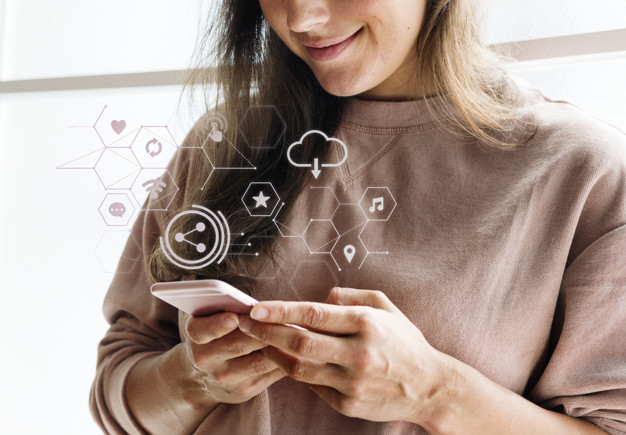Living Online During the Pandemic
Craving social interactions
Written by Aileen Roncoroni
You know the feeling when you haven’t eaten for a while and start craving food? What if I told you that social isolation causes similar craving in your brain? That’s what neuroscientists in Cambridge recently found. Think of loneliness as hunger: in both cases, you get a brain signal that a need is unmet, making you seek social contact or food. Physical distancing became the new normal since COVID-19 spread out a year ago. However, digital technology improves the situation, allowing socialisation at a distance. But is that enough to meet your social needs? It depends!
Peer interaction
“Social contact is something very basic: we need it in our lives, and when we don’t have it, we crave it similarly as we crave food.” – says Dr Livia Tomova, a cognitive neuroscientist at the University of Cambridge – “Especially when you are a teenager, interaction with peers is meaningful”. This is because you are experiencing a deep psychological and social transformation, along with hormonal and biological changes. Your social brain is developing during these years; that allows you to understand others and create a sense of yourself, as Tomova explains. According to scientists, few face-to-face contact opportunities because of enforced physical distancing are likely to affect your brain and behavioural development. A long history of animal research on mice has already observed that social deprivation during adolescence causes increased general stress, anxiety, hyperactivity, and violence. However, for humans, psychologists and neuroscientists are still investigating this.

“Teenagers’ brain”
Photo credits: Edutopia, illustration by Leigh Wells
Digital connections
Psychologists believe that social media platforms are powerful tools to reduce these bad effects of physical distancing. Nevertheless, there is a worry that they might interfere with the normal development and well-being of teenagers. Tomova clarifies that a lot depends on the type of use of digital technology: social or non-social. The “social” use involves active communication through texting or video chatting, but also liking photos and sharing posts. The “non-social” use is passive, such as listening to music, watching videos, and even lurking on strangers’ profiles and scrolling the newsfeed. Recent studies show that when your type of use is “social”, the outcomes on your well-being are generally positive. For example, it helps you maintain personal relationships. On the other hand, “non-social” use has more problematic consequences. For instance, it can lead to feelings of loneliness and general unhappiness. You might also experience the so-called “fear of missing out” (FOMO): the anxiety of missing a social interaction opportunity. Still, more research is needed to deeply understand this.

The FOMO concept
Illustration by Freepik.com
The silver lining
If used correctly, digital technology can help you reduce negative emotions and keep a healthy social life. In Tomova’s opinion, video chats are a great development of technology that boosted during the pandemic. “It is an excellent way to connect with each other, and it is useful to deal with feelings of loneliness.” – she affirms. When asked for advice on how to best use digital technology for social purposes, Tomova answers: “As of today, we cannot objectively say what type of social media use is good or bad”. “As a result of future research, we will understand which online behaviours are helpful and which are not.” – she continues. Despite this, she recommends paying attention to your feelings while being online, which are totally subjective. For instance, loneliness is a warning bell that you are not connecting with others in a healthy way, so you should explore other options. More concretely, try switching social media, digitally reaching out to your friends, and maybe even making new online friendships.

Connecting with friends
Photo credits: Rawpixel.com – Freepik.com
People, and especially parents, are often pessimistic when it comes to youngsters’ digital technology use. However, psychological research reveals that negative effects seem pretty small and vary from person to person. Instead, social media can stimulate connection and improve social life during the lockdown, particularly for teenagers. While there is still a lot that psychologists and neuroscientists need to find out through further research, loneliness should not be underestimated, especially during adolescence. Taking advantage of social media to maintain peer interactions is a great approach to cope with physical distancing. Just remember to make “social” use of digital technology and check how you feel from time to time while scrolling. You always have the power of choice!
Sources
Interview with an expert: Dr Livia Tomova, college research fellow working on Cognitive Neuroscience at the University of Cambridge
Scientific publications
Akram, W., & Kumar, R. (2017). A study on positive and negative effects of social media on society. International Journal of Computer Sciences and Engineering, 5(10), 347-354. https://doi.org/10.26438/ijcse/v5i10.351354
Clark, J. L., Algoe, S. B., & Green, M. C. (2018). Social network sites and well-being: the role of social connection. Current Directions in Psychological Science, 27(1), 32-37. https://doi.org/10.1177/0963721417730833
Orben, A., Tomova, L., & Blakemore, S. J. (2020). The effects of social deprivation on adolescent development and mental health. The Lancet Child & Adolescent Health. https://doi.org/10.1016/S2352-4642(20)30186-3
Orben, A. (2020). Teenagers, screens and social media: a narrative review of reviews and key studies. Social psychiatry and psychiatric epidemiology, 55(4), 407-414. https://doi.org/10.1007/s00127-019-01825-4
Shah, J., Das, P., Muthiah, N., & Milanaik, R. (2019). New age technology and social media: adolescent psychosocial implications and the need for protective measures. Current opinion in pediatrics, 31(1), 148-156. https://doi.org/10.1097/MOP.0000000000000714
Tomova, L., Tye, K., & Saxe, R. (2019). The neuroscience of unmet social needs. Social neuroscience, 1-11. https://doi.org/10.1080/17470919.2019.1694580
Tomova, L., Wang, K. L., Thompson, T., Matthews, G. A., Takahashi, A., Tye, K. M., & Saxe, R. (2020). Acute social isolation evokes midbrain craving responses similar to hunger. Nature Neuroscience, 23(12), 1597-1605. https://doi.org/10.1038/s41593-020-00742-z

